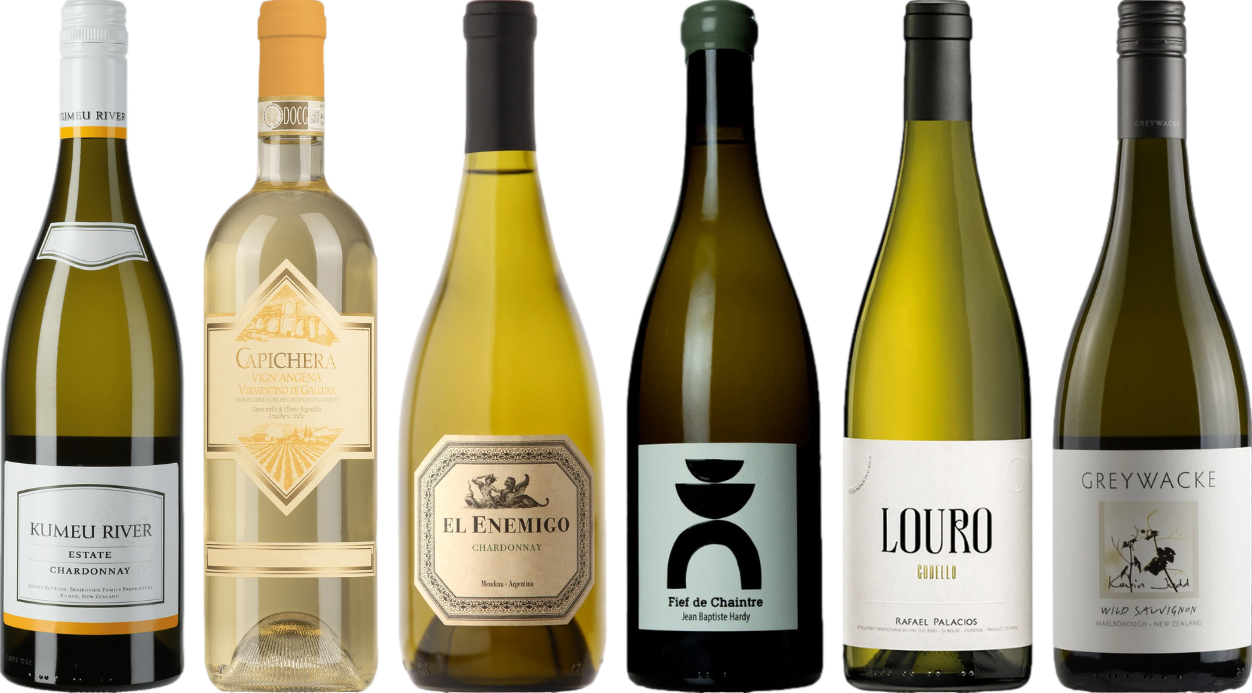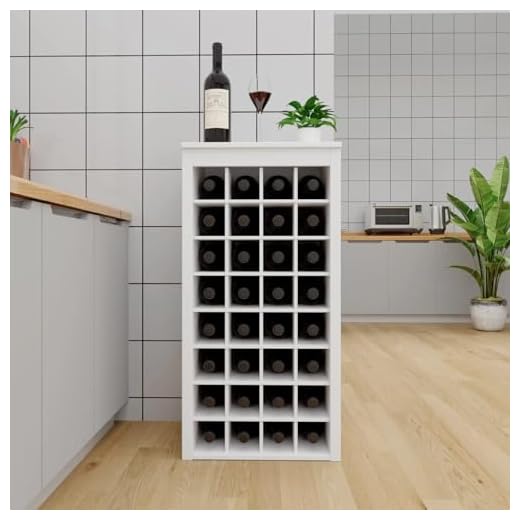



Typically, a bottle stored in a chilled environment maintains its quality for about three to five days after opening. Beyond this timeframe, oxidation alters the flavor profile, diminishing the overall experience. For best results, I recommend consuming it within this window to fully appreciate its intended character.
Once sealed, consider using a wine stopper to limit exposure to air, which can help preserve freshness. Additionally, it’s beneficial to keep the temperature consistent, ideally between 45°F and 50°F (7°C to 10°C). This range allows for optimal enjoyment and slows down the degradation process.
If you have an unopened bottle, it can remain in the refrigerator for a longer period, generally up to a few weeks. However, for the best taste and freshness, aim to consume it within a month. Regularly checking for any changes in aroma or flavor is advisable to ensure that it meets your expectations.
Optimal Storage Duration for Chilled White Varietals
Typically, chilled whites maintain their freshness for about 3 to 5 days after opening. This timeframe can vary based on the specific characteristics of the bottle.
Here are some key factors affecting preservation:
- Type of Wine: Lighter styles like Sauvignon Blanc or Pinot Grigio tend to lose their appeal faster than fuller-bodied options such as Chardonnay.
- Seal Quality: Using a proper wine stopper can extend the lifespan slightly by minimizing oxidation.
- Temperature Consistency: Keeping the temperature stable is crucial for maintaining quality. Fluctuations can negatively impact flavor.
For optimal enjoyment, consume within a week. If the taste starts to shift, it’s best to avoid further consumption. Always trust your palate; if it doesn’t taste right, it’s time to part ways.
Optimal Temperature for Storing White Wine
Ideally, a range between 45°F and 50°F (7°C to 10°C) is recommended for optimal preservation of white varietals. This temperature ensures that the wine maintains its freshness and bouquet, allowing for the best tasting experience.
Temperature Fluctuations
Stable temperatures are paramount. Frequent shifts can disturb the wine’s aging process, potentially leading to undesirable flavors. Utilizing a thermometer can help monitor the environment, ensuring consistency in storage conditions.
Cooling Methods
Using a dedicated wine refrigerator is a worthwhile investment. These units maintain the appropriate temperature and humidity levels, creating an ideal atmosphere for aging and enjoyment. If that’s not an option, a regular fridge may suffice for short-term storage, but be cautious of temperature variations every time the door is opened.
For the best results, remember to serve white wines at their optimal drinking temperature, typically around 50°F to 55°F (10°C to 13°C), to enhance their aromatic qualities and flavors.
Understanding the Shelf Life of Opened White Wine
Opened bottles typically maintain quality for 3 to 5 days in a chilled environment. After this period, oxidation alters flavor and aroma, leading to a less enjoyable experience.
For optimal preservation, use a vacuum pump or inert gas to reduce oxygen exposure. This technique can extend freshness by a couple of days. Store upright to minimize contact with air, and ensure the cork is securely replaced, as tightly sealed bottles retain integrity longer.
Recognize that different varietals exhibit varied longevity. Crisp whites like Sauvignon Blanc may lose their charm faster than richer ones such as Chardonnay. Always trust your senses–if the aroma is off or the taste has soured, it’s time to discard.
For best results, consume opened bottles promptly. Enjoying wines soon after opening ensures you experience their full potential, enhancing your overall enjoyment.
Identifying Spoiled White Wine
Examine the appearance first. If the liquid has turned a brownish hue, it’s a strong indicator of oxidation. Fresh white wines should exhibit bright, clear colors. A cloudy appearance or floating particles may signal spoilage.
Next, assess the aroma. If a musty or vinegar-like scent emerges, it’s likely gone bad. A fresh bottle should have fruity or floral notes. Subtle changes can indicate deterioration.
Tasting for Quality
If the visual and olfactory checks pass, take a small sip. An off or sour taste suggests spoilage. Quality wines should have balanced flavors; bitterness or excessive acidity points to an issue.
Storage Duration and Conditions
Keep in mind that even well-stored varieties have a limited lifespan once opened. If it’s been several days or weeks since opening, it’s wise to evaluate using the methods above. Always trust your senses; they are the best tools for determining wine quality.
Best Practices for Storing Unopened White Wine
Maintain a consistent environment with minimal temperature fluctuations. Ideal conditions include a temperature range of 45°F to 65°F (7°C to 18°C). Locate bottles horizontally to keep the cork moist and prevent air exposure. Use a dark space, avoiding direct sunlight and fluorescent lighting, which can harm the wine’s quality over time.
Control humidity levels between 50% and 70% to prevent cork drying. Consider using a wine fridge for optimal results, as it is designed to provide the right temperature and humidity. Store bottles away from strong odors, as wine can absorb scents through the cork.
Limit vibrations, as they can disturb sediment and affect the aging process. Keep bottles in a stable location, avoiding frequent movement. If collecting, consider a dedicated wine cellar for long-term aging, ensuring all aspects of storage are monitored.
Impact of Different White Wine Varieties on Storage Time
Chardonnay typically lasts about 3 to 5 days once opened, while more delicate varieties like Pinot Grigio should be consumed within 2 to 3 days. Sauvignon Blanc, known for its acidity, can maintain quality for about 4 to 5 days after being uncorked. Sweet wines such as Riesling or Moscato have a longer shelf life, often remaining enjoyable for up to a week due to their higher sugar content.
When considering unopened bottles, full-bodied whites like Viognier and oaked Chardonnay age better, often lasting several years in a cool environment. In contrast, lighter whites such as Soave or Verdicchio are best consumed within a year or two for optimal freshness.
The storage time also varies according to the wine’s closure. Bottles sealed with a screw cap can retain their quality longer than those with corks, as they provide a tighter seal against oxidation. Understanding the specific characteristics of each variety enhances decisions on how to enjoy them at their peak.
Signs That White Wine Should Be Consumed Soon
Check for these indicators to determine if your bottle is nearing its peak:
- Aroma Changes: If the scent shifts from fresh and fruity to dull or vinegary, it’s time to drink up.
- Color Alteration: Look for a darker hue than usual. A significant change in color can indicate oxidation.
- Taste Deterioration: A shift from crisp and vibrant to flat or sour suggests it’s past its prime.
- Fizz Formation: If still varieties develop bubbles, it can signal unwanted fermentation, indicating a need for immediate consumption.
Storage Duration
Be mindful of how long the bottle has been opened. Typically, opened bottles of white should be enjoyed within three to five days for optimal flavor.
Visual Inspection
Inspect for sediment or cloudiness. These visual cues may suggest spoilage, warranting quick enjoyment.
Tips for Extending the Freshness of White Wine
Seal opened bottles tightly with a cork or use a wine stopper to minimize air exposure. This simple step significantly slows down oxidation, which can spoil the flavor.
Store your bottles upright to reduce the surface area exposed to oxygen and help preserve the taste. This method is particularly beneficial for those that have been opened.
For those with access to a vacuum pump, consider using one to remove air from the bottle before sealing. This technique can further extend the life of your pour.
Avoid placing bottles in direct sunlight or near heat sources. Instead, choose a cool, dark place to maintain optimal conditions. Consistent temperatures are key for preservation.
Monitor the storage area for vibrations, which can negatively impact the wine. Store bottles on a stable surface, away from appliances that may create movement.
To enhance your culinary experience, consider pairing your favorite varietals with dishes like lamb. For inspiration, check out this guide on how to cook lamb steaks in ninja air fryer.
| Tip | Description |
|---|---|
| Seal Properly | Use a cork or stopper to limit air exposure. |
| Store Upright | Minimize oxygen exposure by keeping bottles upright. |
| Vacuum Pump | Remove air for longer-lasting freshness. |
| Avoid Sunlight & Heat | Keep bottles in a cool, dark environment. |
| Stable Surface | Limit vibrations by storing on a stable surface. |
FAQ:
How long can I store an opened bottle of white wine in the fridge?
An opened bottle of white wine can typically be stored in the refrigerator for about 3 to 5 days. It’s important to keep the bottle tightly sealed with its original cork or a wine stopper to minimize exposure to oxygen, which can cause the wine to spoil. After a few days, you may notice changes in flavor and aroma, so it’s best to consume it within this timeframe for the best experience.
Does the type of white wine affect how long it lasts in the fridge?
Yes, the type of white wine can influence its longevity in the fridge after opening. Lighter wines, such as Sauvignon Blanc or Pinot Grigio, usually have a shorter shelf life, while fuller-bodied wines, like Chardonnay, may last a bit longer. Sweet wines can also have a longer shelf life due to their higher sugar content, which acts as a preservative. Regardless of the type, always store the wine properly and consume it within a reasonable period for optimal taste.








